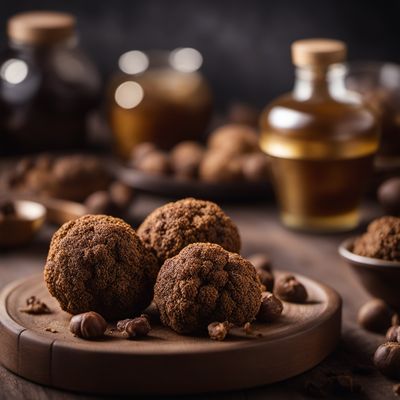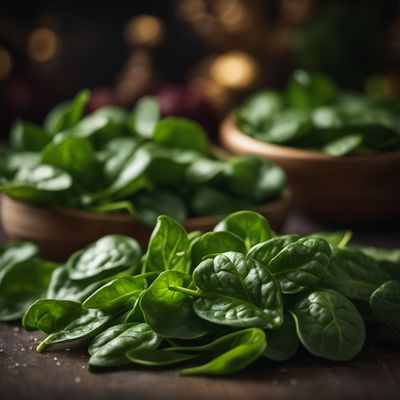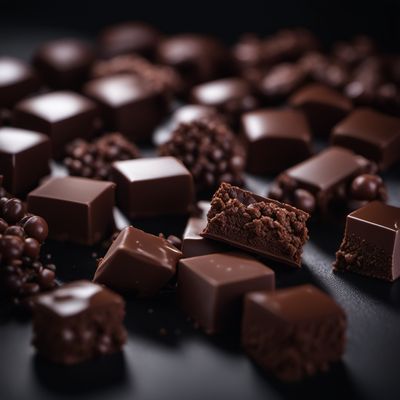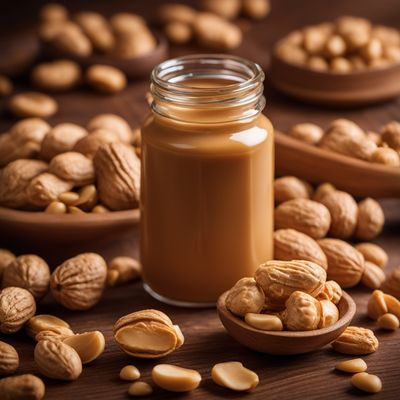
Ingredient
Malt flavour
"The Golden Essence: Unveiling the Richness of Malt Flavour"
Malt flavour is derived from malted grains, such as barley, and is characterized by its rich, toasty, and slightly sweet taste. It has a deep golden color and a distinct aroma that evokes warm notes of caramel and roasted nuts. The texture of malt flavour can vary depending on its form, ranging from powdery to syrupy. Its unique characteristics make it a popular choice for enhancing the flavor and texture of various dishes.
Origins and history
Malt flavour has a long history dating back to ancient civilizations, where it was used in the production of beer and bread. It originated in Mesopotamia and Egypt, where malted grains were first discovered and utilized. Over time, the use of malt flavour spread across different cultures and regions, becoming an integral part of traditional recipes and brewing techniques.
Nutritional information
Malt flavour is a concentrated ingredient that provides a rich source of carbohydrates, vitamins, and minerals. It is also relatively low in fat and cholesterol. However, it is important to note that the nutritional content may vary depending on the specific brand or form of malt flavour.
Allergens
Malt flavour is typically derived from barley, which contains gluten. Therefore, individuals with gluten sensitivities or celiac disease should exercise caution when consuming products that contain malt flavour.
How to select
When selecting malt flavour, look for reputable brands that use high-quality malted grains. Opt for products that are free from additives or artificial flavors. Additionally, consider the specific form of malt flavour needed for your recipe, such as malt powder or malt syrup.
Storage recommendations
To maintain the freshness and quality of malt flavour, store it in a cool, dry place away from direct sunlight. Seal the packaging tightly after each use to prevent moisture absorption and clumping.
How to produce
Producing malt flavour at home requires specialized equipment and knowledge of the malting process. It is recommended to leave the production of malt flavour to professional maltsters or breweries.
Preparation tips
Malt flavour can be used in various ways, such as adding it to baked goods like cookies, cakes, or bread for a rich, malty taste. It can also be incorporated into beverages like milkshakes, smoothies, or hot drinks for a comforting and flavorful twist. Experiment with different quantities to achieve the desired level of maltiness in your recipes.
Culinary uses
Malt flavour is commonly used in brewing beer, as well as in the production of malted milkshakes, malted milk balls, and malted hot beverages. It can also be used as a flavor enhancer in baked goods, ice creams, and sauces, adding a unique depth of flavor.
Availability
Malt flavour is widely available in most grocery stores, specialty food stores, and online retailers, making it accessible to home cooks and professional chefs alike.
More ingredients from this category » Browse all

Truffle flavour
The Essence of Earthly Delight

Cream brulee flavour
"Indulge in the Irresistible Delights of Cream Brulee"

Red fruit flavour
The Essence of Red Fruits

Tea green flavour
The Enchanting Elixir: Unveiling the Delicate Flavors of Green Tea

Sage flavour
The Savory Herb: Unleashing the Essence of Sage Flavour

Spinach flavour
Vibrant Green Goodness

Capsicum flavour
The Fiery Essence: Capsicum Flavor

Meat flavour
Savory Essence: Unleashing the Umami of Meat

Wild strawberry flavour
The Essence of Wild Delight

Chocolate dark flavour
Decadent Delight: Unveiling the Richness of Dark Chocolate

Peanut butter flavour
Nutty Bliss: Exploring the World of Peanut Butter Flavor

Curry flavour
The Magic of Curry: Unleashing Flavors